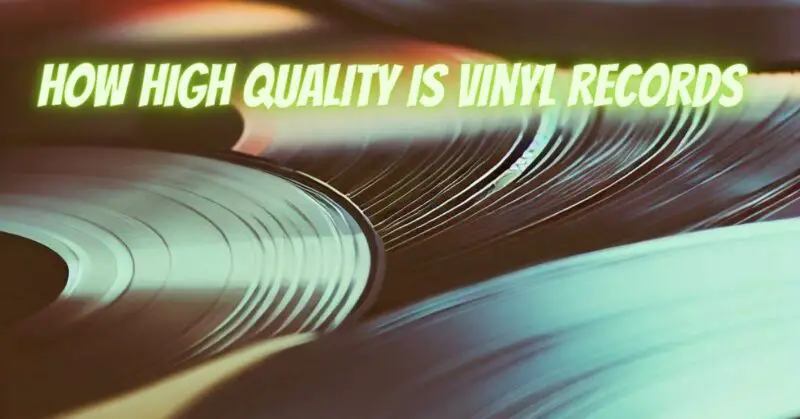Vinyl records have made a remarkable resurgence in recent years, captivating audiophiles and music enthusiasts with their warm, analog sound. But how do you evaluate the sound quality of vinyl records? In this comprehensive guide, we will explore the key factors and techniques to help you assess the sonic excellence of your vinyl collection.
1. Vinyl Condition
The condition of the vinyl record itself plays a fundamental role in sound quality:
- Visual Inspection: Carefully examine the vinyl for visible imperfections, such as scratches, scuffs, or warping. These can lead to pops, clicks, and audible distortions during playback.
- Surface Cleanliness: Clean the record’s surface to remove dust and debris. Dust and dirt can introduce surface noise and affect playback quality.
2. Vinyl Pressing Quality
The quality of the vinyl pressing is crucial:
- Vinyl Weight: Heavier vinyl records (180-gram or higher) often provide better sound quality due to increased stability and reduced resonance.
- Center Hole: Ensure the center hole is properly centered, as off-center holes can cause pitch variations during playback.
- Vinyl Material: Quality vinyl records are typically made from virgin vinyl, which minimizes impurities and provides better sound quality.
3. Turntable and Cartridge Setup
The components of your turntable setup significantly impact sound quality:
- Turntable Calibration: Ensure your turntable is correctly calibrated, including tracking force, anti-skating, and cartridge alignment.
- Cartridge Quality: A high-quality cartridge can make a substantial difference in sound quality. Consider upgrading to a well-regarded cartridge for improved performance.
4. Stylus Condition
The stylus (needle) is a critical component for playback quality:
- Stylus Cleanliness: Keep the stylus clean to prevent dust buildup, which can affect tracking and sound clarity.
- Replacement Interval: Replace the stylus as recommended by the manufacturer or when you notice a decline in sound quality. Worn styli can damage records and degrade sound.
5. Playback Equipment
The quality of your playback equipment matters:
- Amplification: Use a high-quality amplifier or receiver to ensure accurate signal amplification.
- Speakers: Invest in good-quality speakers that complement the characteristics of vinyl sound, such as warm tones and detailed midranges.
6. Room Acoustics
The listening environment can significantly impact your perception of vinyl sound quality:
- Acoustic Treatment: Consider acoustic treatments to reduce reflections and resonance in your listening space, improving overall sound clarity.
7. Music Source
The quality of the recording and mastering also affects sound quality:
- Mastering Quality: High-quality mastering can result in better dynamic range and sound clarity on vinyl.
8. Critical Listening
Engage in critical listening sessions to evaluate sound quality:
- Listening Levels: Play music at a moderate volume to avoid speaker distortion and allow for a balanced assessment.
- Focus on Details: Pay attention to details such as instrument separation, dynamics, and overall tonal balance.
- Compare Recordings: Compare vinyl recordings to digital versions (if available) to discern vinyl-specific characteristics.
Evaluating the sound quality of vinyl records involves a combination of factors, including vinyl condition, pressing quality, setup, playback equipment, and critical listening. By paying attention to these elements and maintaining your equipment, you can fully appreciate the warm and immersive sound that vinyl records offer, ensuring a fulfilling audiophile experience for years to come.


